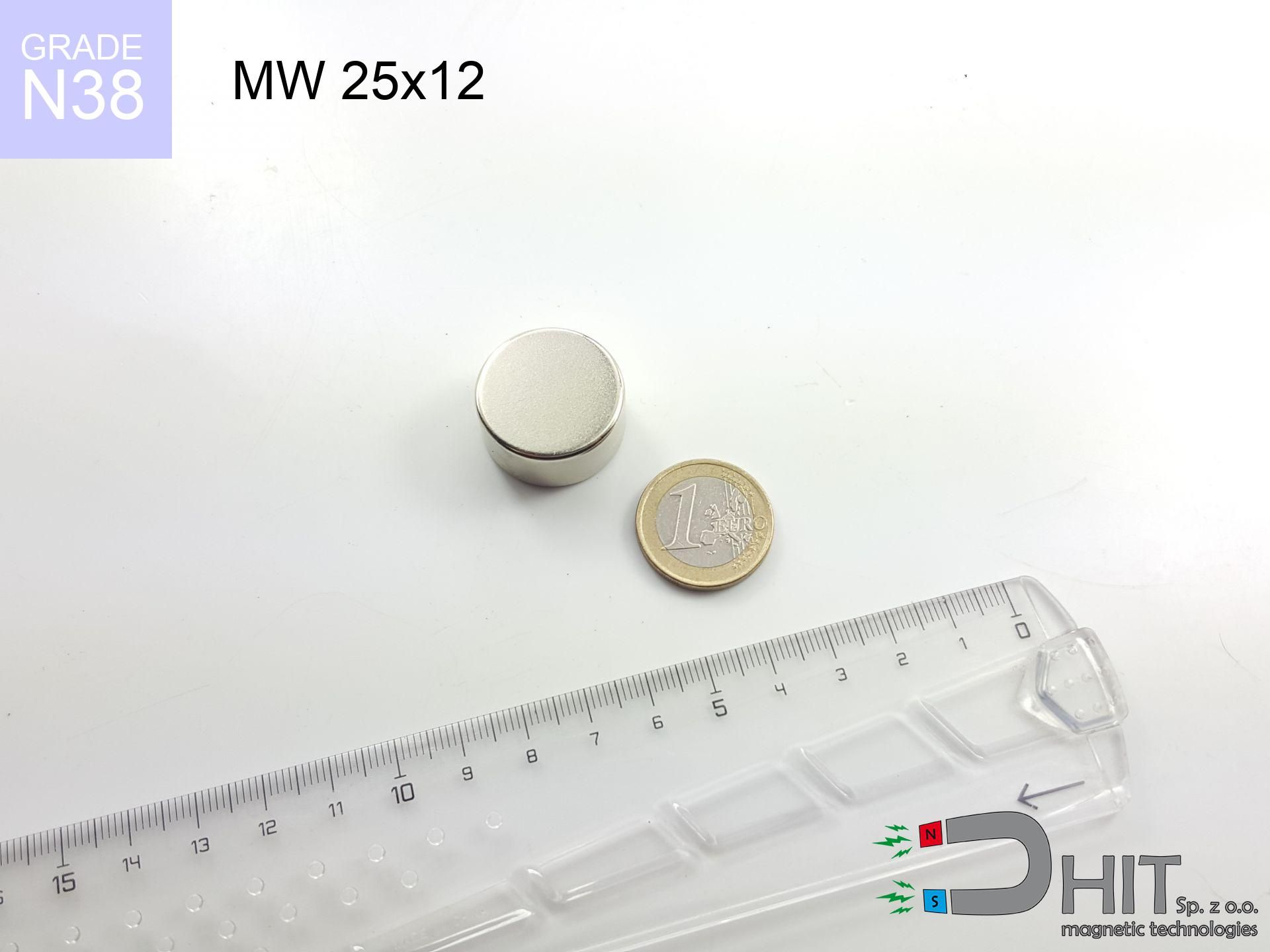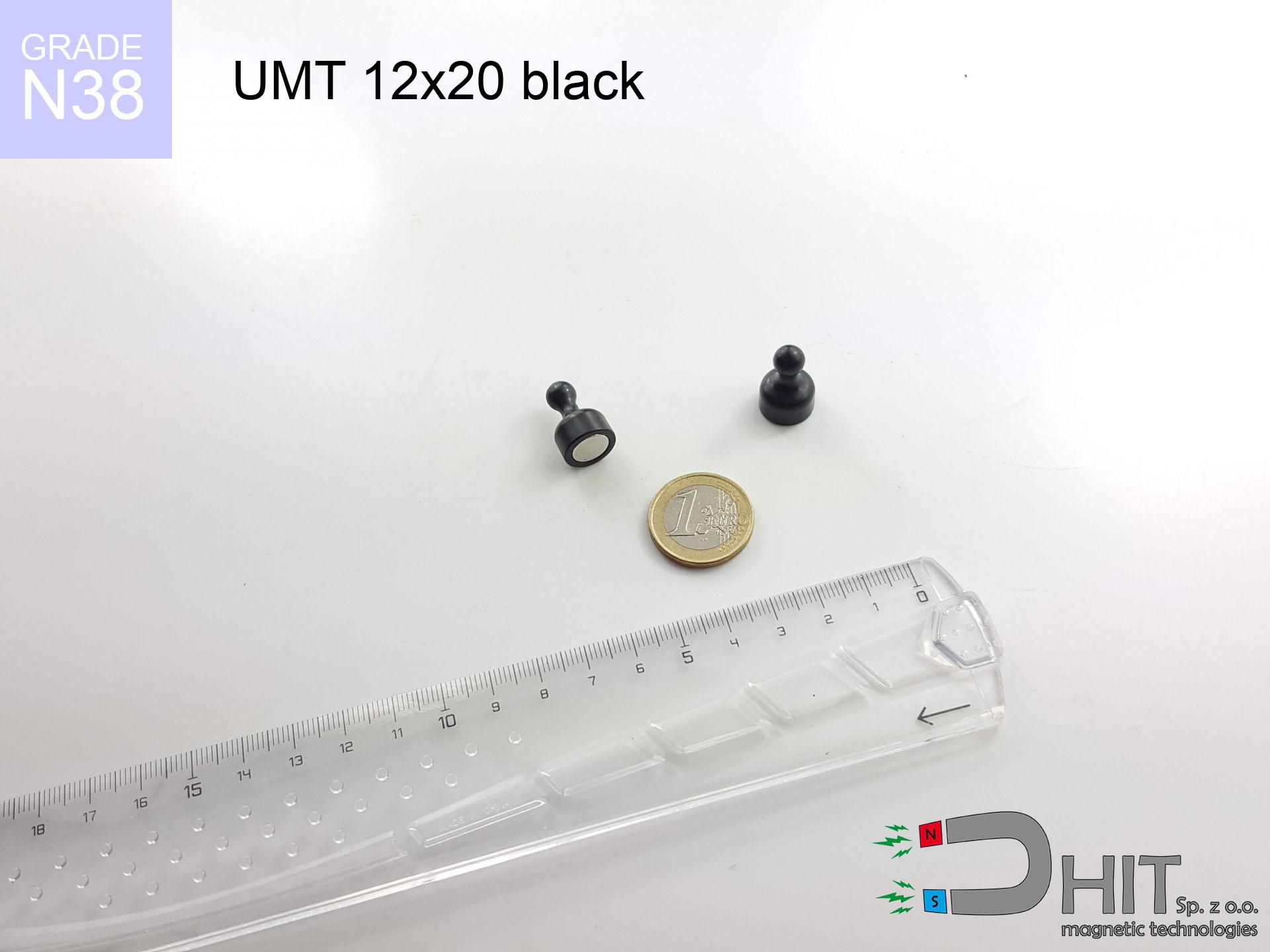SM 32x475 [2xM8] / N52 - magnetic separator
magnetic separator
Catalog no 130466
GTIN/EAN: 5906301813378
Diameter Ø
32 mm [±1 mm]
Height
475 mm [±1 mm]
Weight
2630 g
Magnetic Flux
~ 10 000 Gauss [±5%]
1488.30 ZŁ with VAT / pcs + price for transport
1210.00 ZŁ net + 23% VAT / pcs
bulk discounts:
Need more?
Give us a call
+48 888 99 98 98
if you prefer contact us via
contact form
the contact page.
Strength as well as structure of neodymium magnets can be verified with our
magnetic mass calculator.
Same-day shipping for orders placed before 14:00.
Detailed specification - SM 32x475 [2xM8] / N52 - magnetic separator
Specification / characteristics - SM 32x475 [2xM8] / N52 - magnetic separator
| properties | values |
|---|---|
| Cat. no. | 130466 |
| GTIN/EAN | 5906301813378 |
| Production/Distribution | Dhit sp. z o.o. |
| Country of origin | Poland / China / Germany |
| Customs code | 85059029 |
| Diameter Ø | 32 mm [±1 mm] |
| Height | 475 mm [±1 mm] |
| Weight | 2630 g |
| Material Type | Stainless steel AISI 304 / A2 |
| Magnetic Flux | ~ 10 000 Gauss [±5%] |
| Size/Mount Quantity | 2xM8 |
| Polarity | circumferential - 18 poles |
| Casing Tube Thickness | 1 mm |
| Manufacturing Tolerance | ±1 mm |
Magnetic properties of material N52
| properties | values | units |
|---|---|---|
| remenance Br [min. - max.] ? | 14.2-14.7 | kGs |
| remenance Br [min. - max.] ? | 1420-1470 | mT |
| coercivity bHc ? | 10.8-12.5 | kOe |
| coercivity bHc ? | 860-995 | kA/m |
| actual internal force iHc | ≥ 12 | kOe |
| actual internal force iHc | ≥ 955 | kA/m |
| energy density [min. - max.] ? | 48-53 | BH max MGOe |
| energy density [min. - max.] ? | 380-422 | BH max KJ/m |
| max. temperature ? | ≤ 80 | °C |
Physical properties of sintered neodymium magnets Nd2Fe14B at 20°C
| properties | values | units |
|---|---|---|
| Vickers hardness | ≥550 | Hv |
| Density | ≥7.4 | g/cm3 |
| Curie Temperature TC | 312 - 380 | °C |
| Curie Temperature TF | 593 - 716 | °F |
| Specific resistance | 150 | μΩ⋅cm |
| Bending strength | 250 | MPa |
| Compressive strength | 1000~1100 | MPa |
| Thermal expansion parallel (∥) to orientation (M) | (3-4) x 10-6 | °C-1 |
| Thermal expansion perpendicular (⊥) to orientation (M) | -(1-3) x 10-6 | °C-1 |
| Young's modulus | 1.7 x 104 | kg/mm² |
Table 1: Rod construction
SM 32x475 [2xM8] / N52
| Parameter | Value | Description / Unit |
|---|---|---|
| Diameter (Ø) | 32 | mm |
| Total length | 475 | mm (L) |
| Active length | 439 | mm |
| Section count | 19 | modules |
| Dead zone | 36 | mm (2x 18mm starter) |
| Weight (est.) | ~2903 | g |
| Active area | 441 | cm² (Area) |
| Housing material | AISI 304 | 1.4301 (Inox) |
| Surface finish | Ra < 0.8 µm | Polished |
| Temp. class | 80°C | Standard (N) |
| Force loss (at max °C) | -12.8% | Reversible loss (physics) |
| Force (calculated) | 41 | kg (theor.) |
| Induction (surface) | ~10 000 | Gauss (Max) |
Chart 2: Field profile (19 sections)
Chart 3: Temperature performance
Material specification
| iron (Fe) | 64% – 68% |
| neodymium (Nd) | 29% – 32% |
| boron (B) | 1.1% – 1.2% |
| dysprosium (Dy) | 0.5% – 2.0% |
| coating (Ni-Cu-Ni) | < 0.05% |
Sustainability
| recyclability (EoL) | 100% |
| recycled raw materials | ~10% (pre-cons) |
| carbon footprint | low / zredukowany |
| waste code (EWC) | 16 02 16 |
Other proposals
Strengths as well as weaknesses of rare earth magnets.
Advantages
- They do not lose power, even after nearly 10 years – the reduction in power is only ~1% (based on measurements),
- They retain their magnetic properties even under strong external field,
- In other words, due to the aesthetic layer of silver, the element gains visual value,
- The surface of neodymium magnets generates a concentrated magnetic field – this is one of their assets,
- Made from properly selected components, these magnets show impressive resistance to high heat, enabling them to function (depending on their shape) at temperatures up to 230°C and above...
- Possibility of exact forming and adjusting to atypical conditions,
- Versatile presence in advanced technology sectors – they serve a role in data components, electric motors, diagnostic systems, also other advanced devices.
- Compactness – despite small sizes they provide effective action, making them ideal for precision applications
Limitations
- They are prone to damage upon heavy impacts. To avoid cracks, it is worth protecting magnets in a protective case. Such protection not only shields the magnet but also improves its resistance to damage
- Neodymium magnets decrease their strength under the influence of heating. As soon as 80°C is exceeded, many of them start losing their force. Therefore, we recommend our special magnets marked [AH], which maintain stability even at temperatures up to 230°C
- Due to the susceptibility of magnets to corrosion in a humid environment, we suggest using waterproof magnets made of rubber, plastic or other material immune to moisture, in case of application outdoors
- Due to limitations in producing threads and complicated forms in magnets, we recommend using a housing - magnetic holder.
- Potential hazard related to microscopic parts of magnets pose a threat, if swallowed, which becomes key in the context of child health protection. Furthermore, tiny parts of these products are able to disrupt the diagnostic process medical after entering the body.
- Due to expensive raw materials, their price is relatively high,
Lifting parameters
Maximum lifting capacity of the magnet – what affects it?
- with the use of a yoke made of special test steel, ensuring maximum field concentration
- possessing a thickness of at least 10 mm to avoid saturation
- characterized by even structure
- without any clearance between the magnet and steel
- during pulling in a direction perpendicular to the mounting surface
- at temperature room level
Determinants of lifting force in real conditions
- Space between surfaces – even a fraction of a millimeter of distance (caused e.g. by varnish or unevenness) significantly weakens the pulling force, often by half at just 0.5 mm.
- Load vector – maximum parameter is obtained only during perpendicular pulling. The force required to slide of the magnet along the plate is standardly many times smaller (approx. 1/5 of the lifting capacity).
- Base massiveness – insufficiently thick plate does not accept the full field, causing part of the power to be lost into the air.
- Material composition – different alloys reacts the same. Alloy additives worsen the attraction effect.
- Base smoothness – the smoother and more polished the plate, the larger the contact zone and stronger the hold. Roughness creates an air distance.
- Thermal conditions – neodymium magnets have a negative temperature coefficient. At higher temperatures they are weaker, and in frost gain strength (up to a certain limit).
Holding force was checked on the plate surface of 20 mm thickness, when the force acted perpendicularly, in contrast under attempts to slide the magnet the lifting capacity is smaller. Moreover, even a slight gap between the magnet’s surface and the plate lowers the load capacity.
Precautions when working with neodymium magnets
Sensitization to coating
Certain individuals have a contact allergy to Ni, which is the typical protective layer for NdFeB magnets. Extended handling may cause a rash. We suggest wear protective gloves.
Fire warning
Powder created during grinding of magnets is combustible. Do not drill into magnets unless you are an expert.
Crushing force
Danger of trauma: The attraction force is so great that it can cause blood blisters, pinching, and even bone fractures. Protective gloves are recommended.
Danger to the youngest
Adult use only. Small elements can be swallowed, leading to severe trauma. Store away from kids and pets.
Heat warning
Regular neodymium magnets (grade N) undergo demagnetization when the temperature goes above 80°C. This process is irreversible.
Fragile material
Despite metallic appearance, neodymium is delicate and not impact-resistant. Do not hit, as the magnet may shatter into hazardous fragments.
Handling guide
Handle magnets consciously. Their huge power can surprise even professionals. Be vigilant and respect their force.
Data carriers
Avoid bringing magnets close to a wallet, computer, or TV. The magnetic field can irreversibly ruin these devices and erase data from cards.
Implant safety
For implant holders: Powerful magnets disrupt medical devices. Keep at least 30 cm distance or ask another person to work with the magnets.
Compass and GPS
Remember: neodymium magnets generate a field that disrupts precision electronics. Maintain a separation from your mobile, device, and GPS.

![Separation magnetic rod SM 32x475 [2xM8] / N52 Separation magnetic rod SM 32x475 [2xM8] / N52](https://cdn3.dhit.pl/graphics/banners/magnet.webp)
![SM 32x475 [2xM8] / N52 - magnetic separator](https://cdn3.dhit.pl/graphics/products/sm-32x475-2xm8-wef.jpg)

![SM 25x150 [2xM8] / N52 - magnetic separator SM 25x150 [2xM8] / N52 - magnetic separator](https://cdn3.dhit.pl/graphics/products/sm-25x150-2xm8-sux.jpg)



